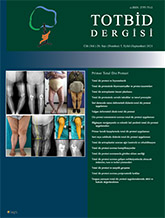
Total knee arthroplasty (TKA) is one of the most commonly performed surgical procedures worldwide. Every year approximately 500,000 new knees are implanted, and the numbers are expected to rise by 1.2 fold by 2030. The most common cause for revision is aseptic loosening. According to the Australian and British National Arthroplasty Registers total knees fail by aseptic loosening by 25.3 and 32.7% respectively. Aseptic loosening is defined as disruption or impairment of the implant-bone contact surface in the absence of infection. This disruption allows micro-movements at the contact surface which can lead to implant subsidence and wear. The micro-particles resulting from the wear trigger an inflammatory response with widespread phagocytosis. The activated macrophages affect the cancellous bone as well leading to lysis. Because of this lytic process the implant will loosen and with time, become instable. Early diagnosis and adequate treatment are of paramount importance in order to avoid possible complications.